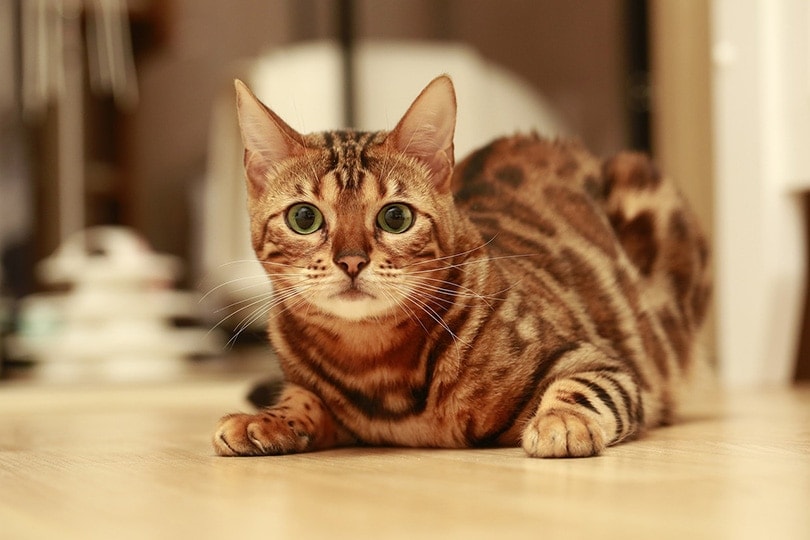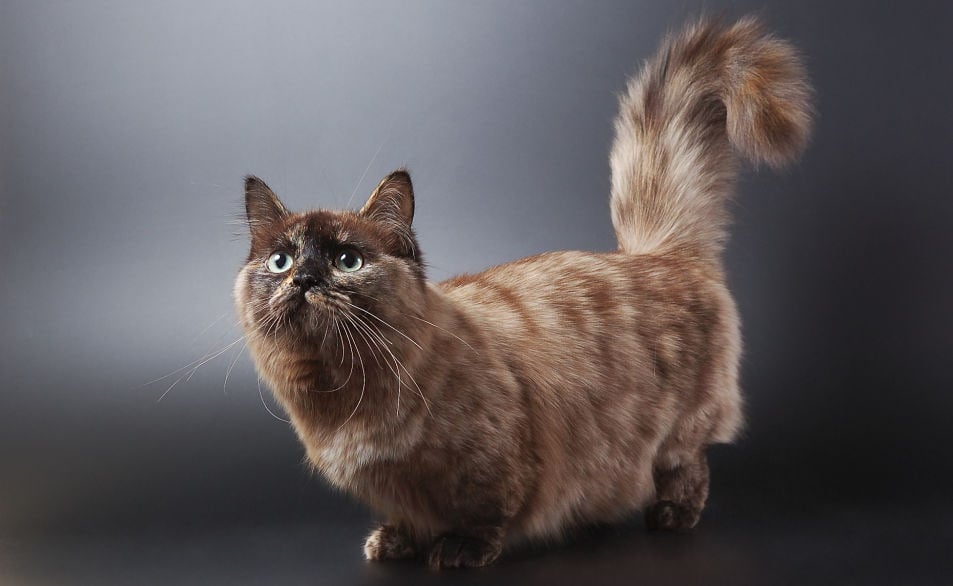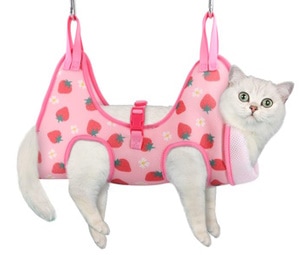British Longhair Cat: Breed Info, Pictures, Care, Traits & Facts
Updated on
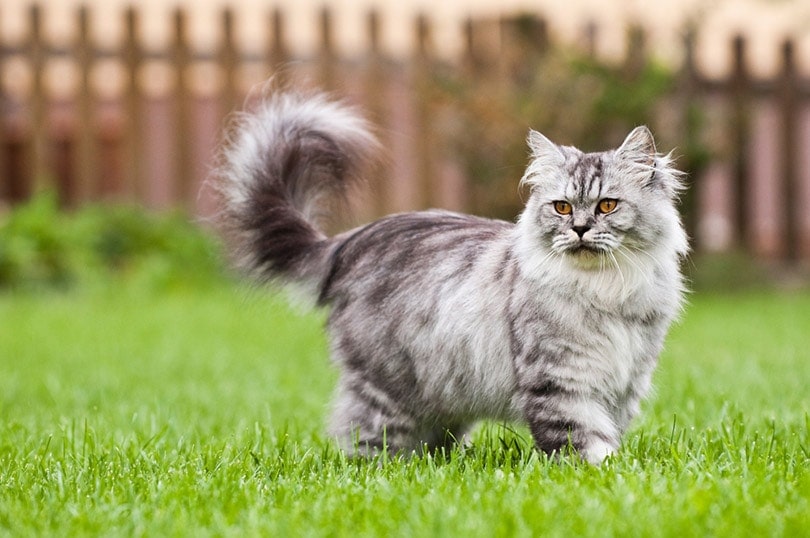
| Height: | 12–14 inches |
| Weight: | 8–16 pounds |
| Lifespan: | 12–15 years |
| Colors: | Chocolate, cinnamon, silver, fawn, blue, black, cream, white, red |
| Suitable for: | Seniors, families with small children |
| Temperament: | Affectionate, intelligent, sociable, good with other pets |
The British Longhair cat has the same plush look and is as elegant as his cousin the British Shorthair, with the main difference being that his extremely silky coat is mid-length. This magnificent cat is still relatively rare in the United States, but his adorable face promises him great success in the years to come. Peaceful, attached to his master while being playful, the British Longhair is indeed the ideal pet.
Read on for more details on this darling breed.
British Longhair Kittens
The hereditary diseases that the British Longhair can suffer from show how important it is to choose a reputable breeder. Indeed, the health of animals and their young is important to a serious breeder. They will ensure a regular follow-up and a check-up for frequent hereditary diseases. They should, therefore, be able to show you the parents’ screening documents.
Never trust non-professional breeders who offer purebred cats at a good price and without any papers. Without the control of a breeding association, you could end up with unfavorable mating, which only increases the risk of inherited diseases. Professional breeders offer favorable conditions and do not hesitate to buy good quality food, do vaccines and preliminary screenings, and give female cats time between gestations.
However, purebred cats are expensive, and you will have to pay the price if you want to acquire a cat that is not only a feast for the eyes but also sufficiently socialized and healthy.
As an alternative, you will also find gorgeous cats in welfare associations and animal shelters. There, many short and longhair cats of all ages are only waiting for one thing: a new home!
3 Little-Known Facts About the British Longhair Cat
1. This breed was created by accident.
By the 1930s, the British Shorthair had become very popular in the UK. Unfortunately, World War II brought its development to an abrupt halt. By the end of the war, the breed had all but disappeared. To save it, crosses were made with different breeds: the Chartreux, Russian Blue, Burmese, and Persian.
This led to the appearance of medium-haired individuals. At first, these cats were simply excluded from breeding. Then, breeders decided instead to select them to create a new breed, and the British Longhair was born.
2. There are over 300 color combinations listed.
As with the British Shorthair, there are unicolored and particolored cats in the British Longhair. Their shades of color range from classic black and brown (chocolate), to so-called “dilutions” (blue, lilac, fawn, and cream) through cinnamon and red. Black, white, and tri-colored cats often resemble long-haired domestic cats. Cats designated as “shaded” have a specific color at the tip of the hair only.
3. British Longhairs have a strong tendency to gain weight.
Physiologically, the British Longhair is prone to being overweight, and this tendency is reinforced by their lack of attraction to physical activity. This cat would rather laze on your lap than run and stretch their paws. Therefore, it is essential not to feed them a diet that is too rich and too high in calories. Above all, avoid excessive treats! Indeed, this cat is very greedy, and will not hesitate to beg for your leftovers, but do not give in; you would be doing them a disservice!
The best way to show affection to this sleek, stocky feline is to offer attention by cuddling and playing.
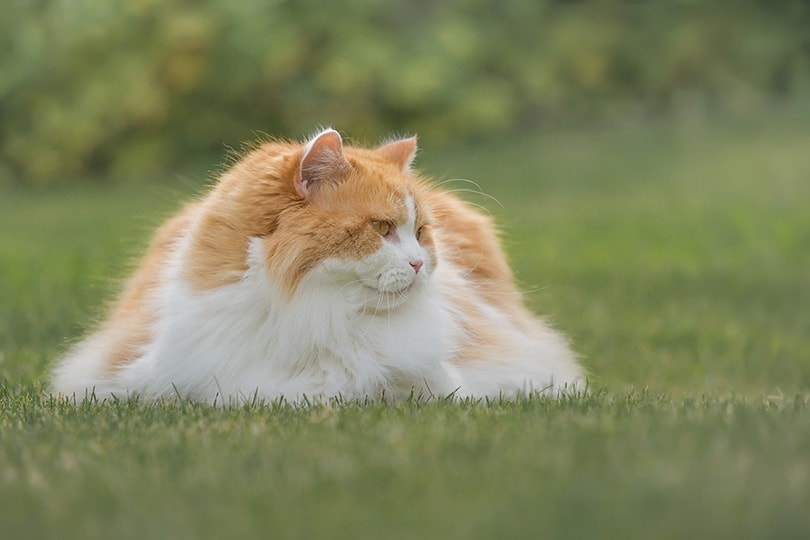
Temperament & Intelligence of the British Longhair Cat:
The British Longhair combines the main characteristics of the British Shorthair and the Persian: they are calm, reserved, and kind cats. In addition, it is a cat that develops a strong bond of affection towards its owner. They also like to play a lot, adore children, and are very sociable; this is why it is said to be the pet par excellence.
Are These Cats Good for Families? 👪
Easygoing, the British Longhair is always peaceful and shows no aggressiveness. It is, therefore, a very suitable cat for a family with young children. Be aware, however, that you should always be careful when a child is playing with a cat. The tiny human must learn to respect his four-legged companion and analyze their body language to know when to leave them alone. The company of a British Longhair is also very popular with the elderly.
Does This Breed Get Along with Other Pets?
This phlegmatic cat gets along very well with its fellows and cohabits easily with dogs. Their majestic build allows them to assert themselves when necessary. They show some independence but don’t like loneliness. If their owner is away all day, they will very much appreciate having another animal to keep them company!
Things to Know When Owning a British Longhair Cat
Food & Diet Requirements 🐡
The British Longhair’s diet must be balanced to maintain the beauty of its coat and optimal health. Thus, their diet must be composed of foods containing high-quality proteins, fats, little carbs, and essential vitamins and minerals. In addition, the portions you give them should be adjusted depending on factors like their age and level of daily exercise.
In addition, to facilitate the elimination of the hairballs that your British Longhair ingests daily, you can opt for kibbles formulated for long-haired cats or special treats that promote the natural elimination of hairballs. Catnip is also a good alternative for pets that don’t go outdoors.
Besides, if your vet has detected a predisposition to hypertrophic cardiomyopathy (HCM) or kidney cysts, you should adjust your cat’s diet accordingly. Do not hesitate to ask them to give you concrete advice!
Exercise 🐈
The British Longhair is a little home-like cat. It is therefore essential to make sure they get enough exercise. Besides, this breed is considered a particularly intelligent cat who likes to be stimulated. So, the best solution for this is to play with your furball. You can use a whole range of play accessories: balls, false prey, fishing rods, or laser pointers. Your cat will be delighted to share with you this moment of relaxation, which will remind them of the games with their brothers and sisters when they were just little kittens!
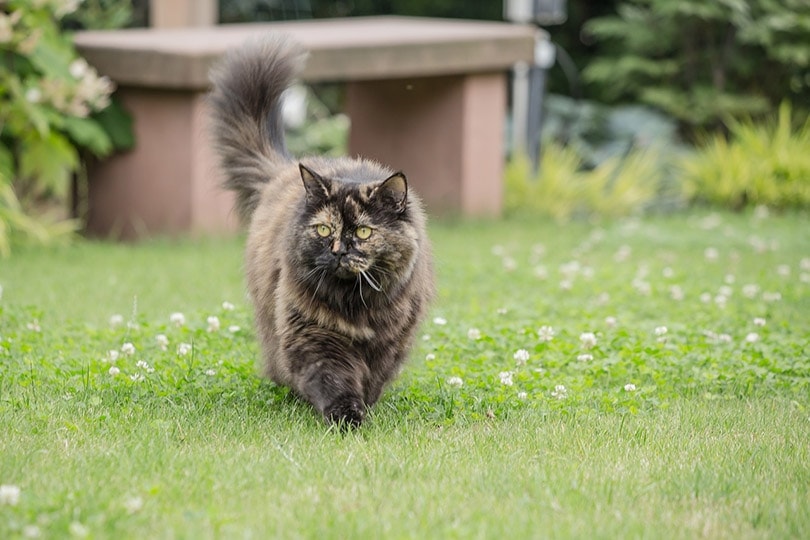
Training 🧶
The misconception that cats cannot be trained is half true. Sure, cats can’t be trained like dogs, but they learn very quickly. That’s why it’s important to be consistent in educating your cat. For example, don’t let your cat beg at the table. This is especially true for purebred cats, who spend much of their day indoors, exercise less, and tend to be overweight.
Grooming ✂️
This beautiful cat’s long coat requires more care than a short coat. To avoid hairballs and knots in the undercoat, you will need to brush it frequently, at least once a week, and more often during the shedding period.
Also, to prevent knots from forming, your cat should be accustomed to the brush and comb from an early age. There are all kinds of cat grooming and hygiene products on the market, so it’s up to you to decide what works best for your cat. Start with a soft brush that does not pull the thin coat or cause injury to the skin. Give your kitty a small treat after each treatment session. Then, when grooming times are no longer a problem for you and your cat, you can choose more effective brushes and combs as needed.
In addition, true to their image of very clean animals, cats take care of their coats themselves. Indeed, the cat’s tongue has horny papillae, which are ultimately the most effective instrument for grooming. Unfortunately, this also means that cats swallow a significant amount of hair when grooming themselves. So, to help your cat get rid of hairballs naturally, you can give him catnip or special treats. However, when buying cat treats, make sure they have a quality composition, ideally free of sugar or plant by-products.
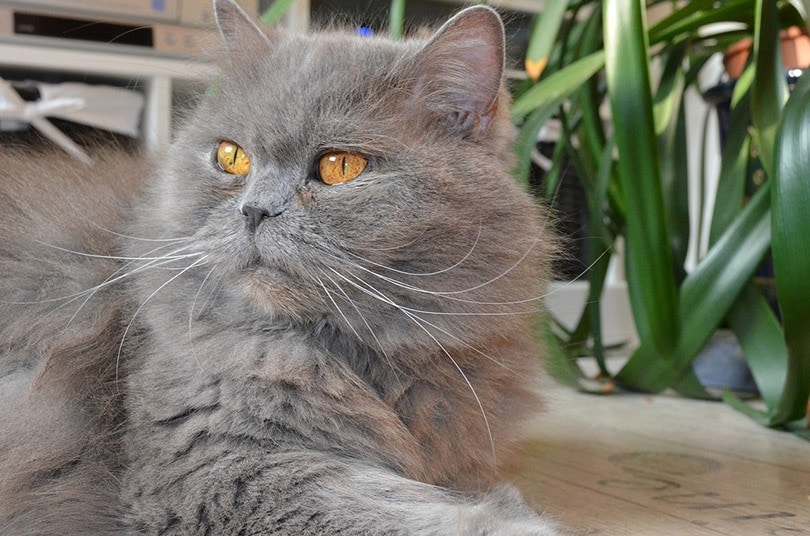
Health and Conditions 🏥
British Longhairs are generally healthy cats. However, they can develop illnesses identical to those of their shorthaired cousins. Obesity is also a threat since this cat prefers to live indoors. The best solution is to offer your kitty regular exercise by playing with them.
Besides, the British Longhair very often suffers from polycystic kidney disease of the dominant type. This inherited disease is common in British Shorthairs and Persians and, therefore, also affects British Longhairs since it results from the cross between these two breeds. Kidney cysts develop very early, even from a young age, and can be detected easily by ultrasound.
The British longhair also frequently develops a condition of the heart muscle called hypertrophic cardiomyopathy (HCM). A regular heart ultrasound is the best way to detect the disease early enough. On the other hand, hypertrophic cardiomyopathy cannot be treated, but early diagnosis opens up treatment options that will extend your pet’s life expectancy.
- Obesity
- Feline hypertrophic cardiomyopathy
- Polycystic kidney disease
Male vs Female
A male British Longhair cat is slightly larger than a female and heavier to carry. He also tends to be more cheerful and cuddly than females, as reported by most owners of this cat breed.
Conclusion
If you love cats with long fur, adorable little faces, and affectionate characters, then the British Longhair should be for you! This is the longhaired variant of the British Shorthair, which inherited the curvy figure and soft, pleasant personality from its cousin. This cat, perfectly suited to indoor life, will delight a family with children as much as a single or older person.
- See Also: Oriental Longhair Cat
Featured Image Credit: Dora Zett, Shutterstock


